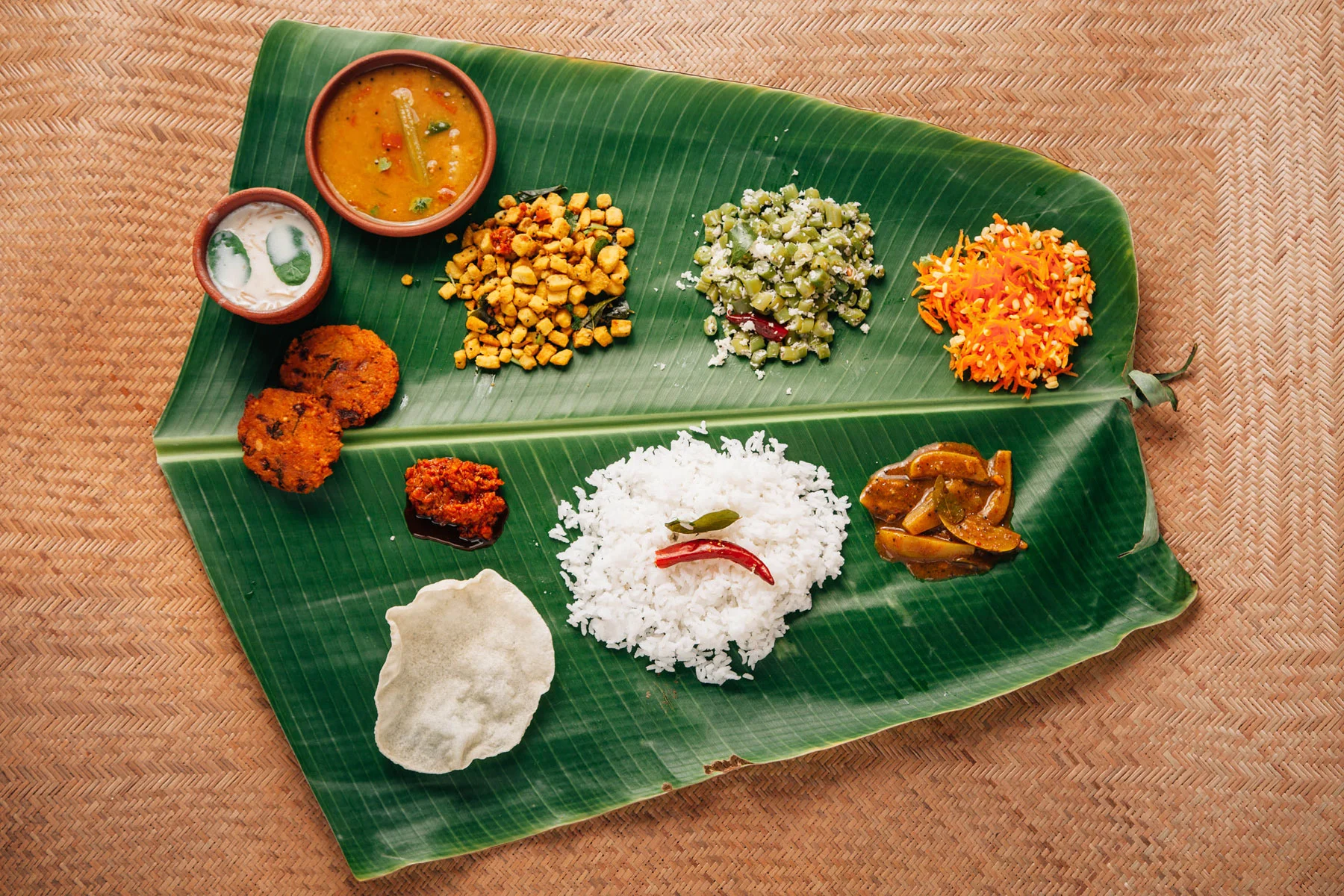Athai’s Legacy of Leftovers

Vijayalakshmi Sridhar resourceful aunt has an uncanny talent for repurposing leftovers in inventive ways.
For cleanliness, one should emulate Sandhya. For decking up the house, one should emulate Sandhya. For elegant sari draping, for being always on the front foot to help, for being the perfect host, Sandhya is the poster girl. Sandhya is my athai (aunt). Our family’s pride and the rib-cracking responsibility to take it forward were laid wholly on her thin shoulders.
As a young girl who visited her home over summer holidays, I was smitten by her commitment. Belonging to a Tamil brahmin family that treated storing and eating leftover food as unforgivable as homicide, emerging a strong crusader for food waste was a class act she launched and succeeded, all by herself.
Athai’s food-saving efforts went beyond just her household; it pulled others into its fold too. At family events like weddings, first birthday celebrations, baby showers, and house-warmings, athai would go into the kitchen after the main event, to oversee lunch preparations, mentally marking the dishes that would do well with a longer shelf-life. After lunch, she would return to the kitchen and start packing up the leftovers. This would often include paruppu vadas, usili, sambar, rasam, morkuzhambu, poriyal, koottu, cooked rice, payasam, chips, pickle, and even sometimes, the beeda — the post-lunch breath-freshner or digestive. After sending a large package to the nearest old-age home, she would concentrate on her own take-away box. In the early days, she’d use the disposable containers the caterers brought with them, but later I saw her bring her own stainless steel tiffin carriers to these events.
Athai’s family is small — her husband, and two live-in house-help. But her in-laws, nieces and nephews lived around her in the eight-storied apartment complex, and she would always share her haul with them — but not before she worked her magic on them, of course. She handled those leftovers with a delicious inventiveness.
She would plan the day’s menu with a combination of the leftovers she had on hand. For example, she would pair usili and koottu with rasam. If the sambar was too little, she would pour out the watery bits of rasam into a different container and use the residual rasam in the sambar. Sometimes poriyal would be re-heated and mixed with rice, a dash of lemon juice and coriander leaves, to make a simple chitranna. My favourite was an abridged yericha kuzhambu she prepared from leftover sambhar. First she would make a dry masala to bring out all the flavours lying dormant in the day-old sambhar. This would involve a roast and grind of the quintessential south Indian spice trinity – channa dal, dry red chillies and coriander seeds. She would then add it to the sambar, bringing it to a gentle boil on the stove. Next, she’d slip a gooseberry-sized ball of jaggery in, and leave it to simmer until the vegetables and dal turned into a homogenous mush, and the whole concoction took on a deep, smokey flavour. A crackling tadka, with black mustard seeds, dry chillies, and curry leaves in sesame oil, would bring the curtain down on the production. On hot white rice, moistened with sesame oil, this kuzhambu is quite simply, incomparable.
Recently I came across research studies on the natural probiotic culture that is found in cooked, leftover rice in the fridge, and the health benefits of it. But giving credit to where it is due, I would say that our ancestors have taught us how to use up excess food, safely and wisely. I still remember the previous day’s vathalkuzhambu reheated and eaten with leftover rice, mixed with curd in a kalchatti (a vessel made from slate stone that retains the freshness of the curd rice and keeps its cool) and served with the next day’s first meal. Isn’t the last day of the wedding a sterling validation for leftovers?
Athai continued her noble effort ceaselessly — much to the angst of a few cribbers and judgers — like my dad who crinkled his brows every time he ate at athai’s house, wondering if it was a mandapa take-away. Indeed her reputation has transcended generations — so much so that she is fondly referred to as ‘Carrier Athai’, a reference to the tiffin carrier that never left her side. And whenever she couldn’t attend a family event, we took over her role, and become the carriers of her carrier.
Her enthusiasm has not dulled with age. Recently, after we started dining out at fancy restaurants, athai would fondly look forward to having leftovers parcelled, relishing the joy of carrying something home. I don’t know if she microwaves pizza with the moussaka, or breaks down the stuffed kulcha into a cheesy dip. But the riot of her culinary curation has certainly held me in its thrall. One thing is for certain, I’ve learnt that leftovers can unleash a creativity in us, if only we let them, as we stitch together different components of a prepared meal to suit our family’s tastes.
Vijayalakshmi Sridhar is a features writer and a published fiction author currently based out of Bengaluru.
Banner image credit: Travelling Spoon
ALSO ON THE GOYA JOURNAL








